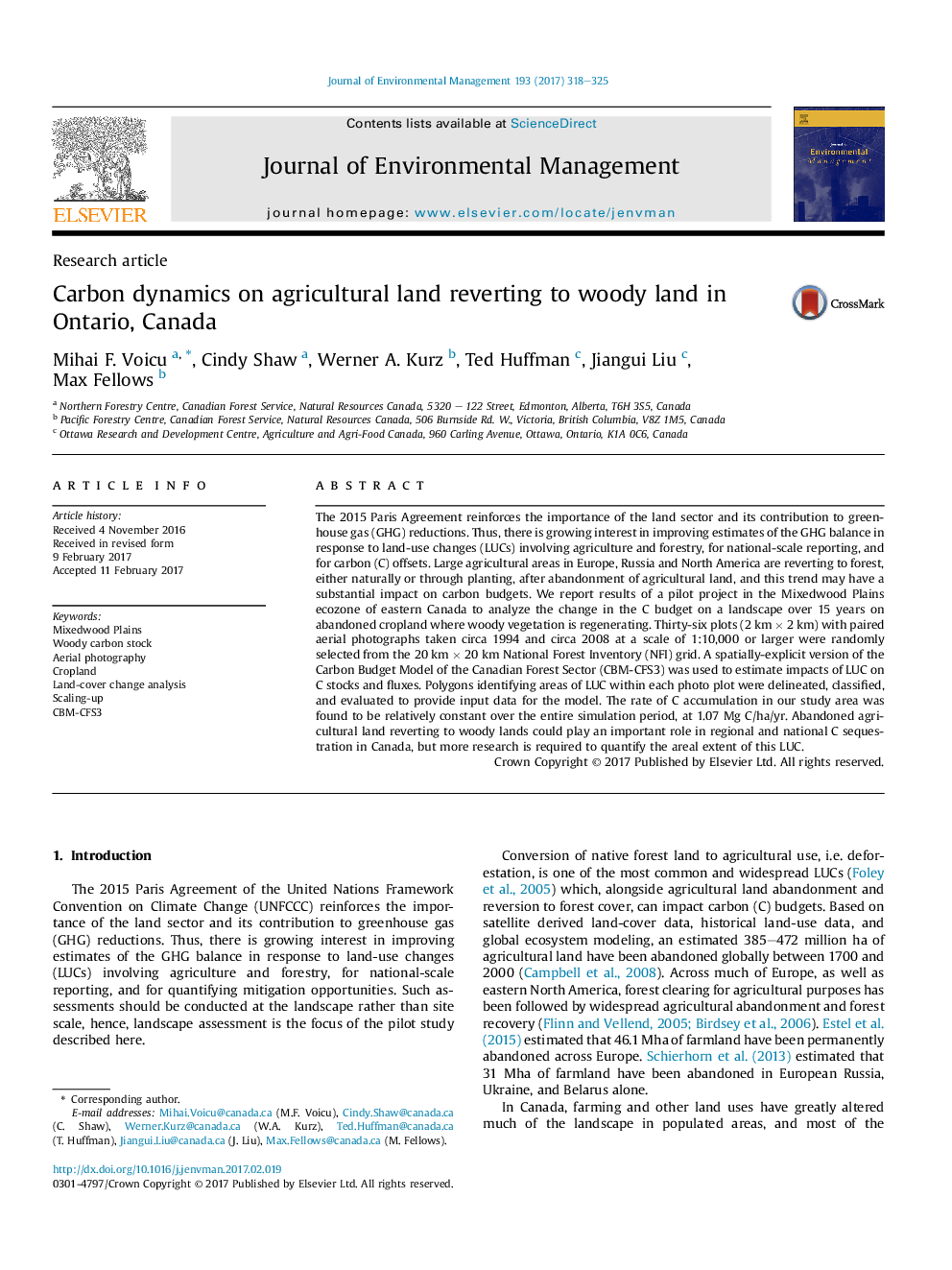| Article ID | Journal | Published Year | Pages | File Type |
|---|---|---|---|---|
| 5116835 | Journal of Environmental Management | 2017 | 8 Pages |
Abstract
The 2015 Paris Agreement reinforces the importance of the land sector and its contribution to greenhouse gas (GHG) reductions. Thus, there is growing interest in improving estimates of the GHG balance in response to land-use changes (LUCs) involving agriculture and forestry, for national-scale reporting, and for carbon (C) offsets. Large agricultural areas in Europe, Russia and North America are reverting to forest, either naturally or through planting, after abandonment of agricultural land, and this trend may have a substantial impact on carbon budgets. We report results of a pilot project in the Mixedwood Plains ecozone of eastern Canada to analyze the change in the C budget on a landscape over 15 years on abandoned cropland where woody vegetation is regenerating. Thirty-six plots (2 km Ã 2 km) with paired aerial photographs taken circa 1994 and circa 2008 at a scale of 1:10,000 or larger were randomly selected from the 20 km Ã 20 km National Forest Inventory (NFI) grid. A spatially-explicit version of the Carbon Budget Model of the Canadian Forest Sector (CBM-CFS3) was used to estimate impacts of LUC on C stocks and fluxes. Polygons identifying areas of LUC within each photo plot were delineated, classified, and evaluated to provide input data for the model. The rate of C accumulation in our study area was found to be relatively constant over the entire simulation period, at 1.07 Mg C/ha/yr. Abandoned agricultural land reverting to woody lands could play an important role in regional and national C sequestration in Canada, but more research is required to quantify the areal extent of this LUC.
Related Topics
Physical Sciences and Engineering
Energy
Renewable Energy, Sustainability and the Environment
Authors
Mihai F. Voicu, Cindy Shaw, Werner A. Kurz, Ted Huffman, Jiangui Liu, Max Fellows,
